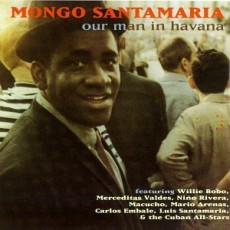
Daily Dose Of Jazz…
Ramón “Mongo” Santamaría Rodríguez was born on April 7, 1917 in Havana, Cuba and learned rumba as a kid in the streets of the barrio. Mentored on bongos and rumba quinto by Clemente “Chicho” Piquero, Mongo recorded some of the very first recorded folkloric rumbas.
Santamaría began playing bongos with Septeto Beloña in 1937. In the 1940s he worked in the house band of the prestigious Tropicana nightclub. When Chicho could not join a late Forties Mexico tour, Mongo stepped in and opened a wider audience. Then a move to New York proved fortuitous as he joined Tito Puente followed by Cal Tjader’s Latin jazz combo.
In 1959 he composed and recorded Afro Blue that has since become a jazz standard. In 1963 when Chick Corea left the band, Santamaria hired Herbie Hancock and a subsequent backstage conversation between Mongo and Donald Byrd who recommended Herbie play Watermelon Man, led to Santamaria recording the tune that soared to the top of the charts.
He recorded over thirty-six albums as a leader and sideman, established a niche of blending Afro-Cuban and African American music. He was an integral figure in the fusion of Afro-Cuban rhythms with R&B and soul, paving the way for the boogaloo era of the late 1960s such as the Temptations 1969 hit “Cloud Nine”, on which he played congas.
Mongo Santamaria, rumba quinto master, conguero and percussionist, whose rendition of Watermelon Man has been inducted into the Grammy Hall of Fame, and whose name has been punned in the classic Mel Brooks/Richard Pryor comedy screenplay Blazing Saddles as “Mongo! Santa Maria!” passed away on February 1, 2003 in Miami, Florida.
More Posts: percussion


